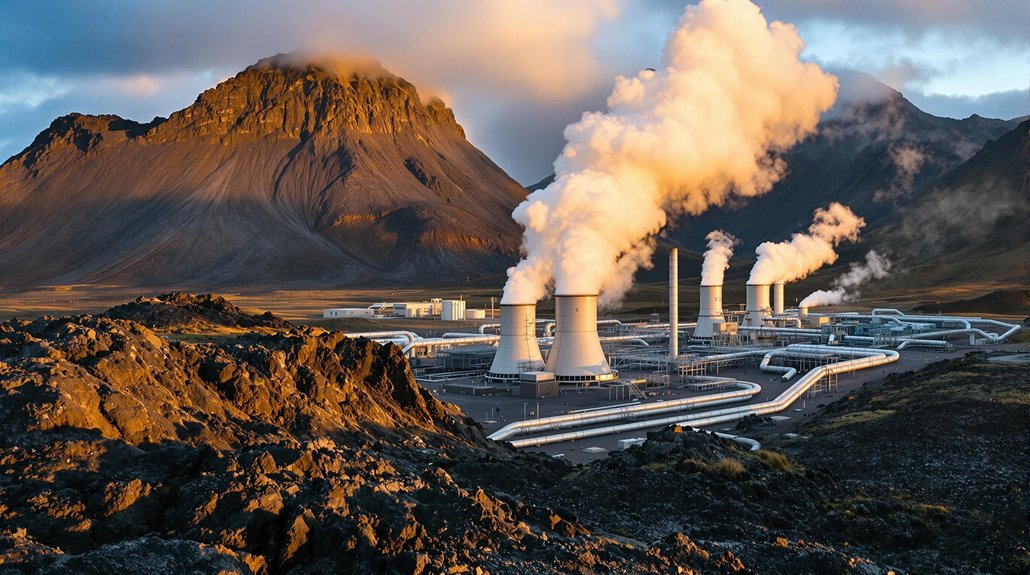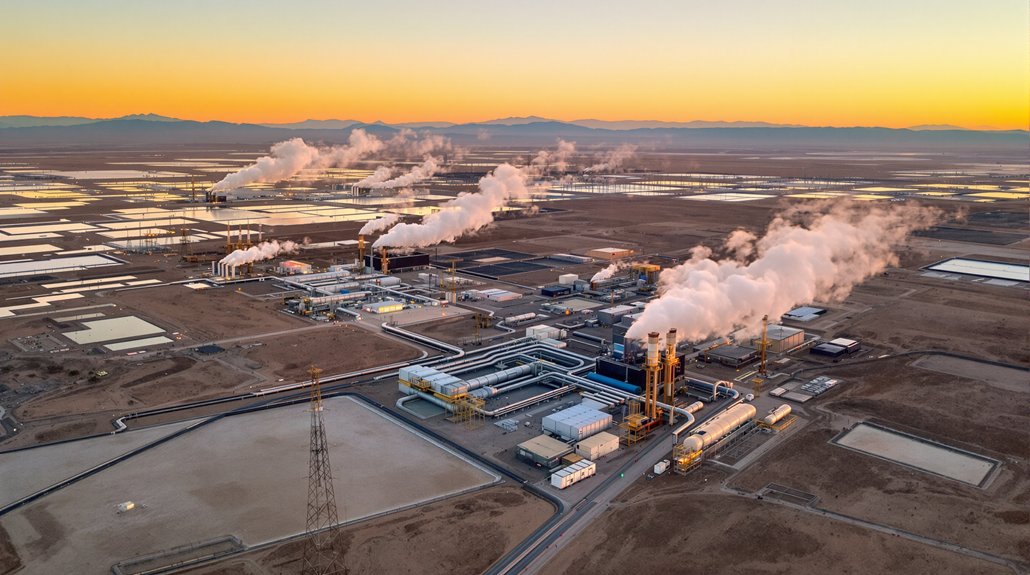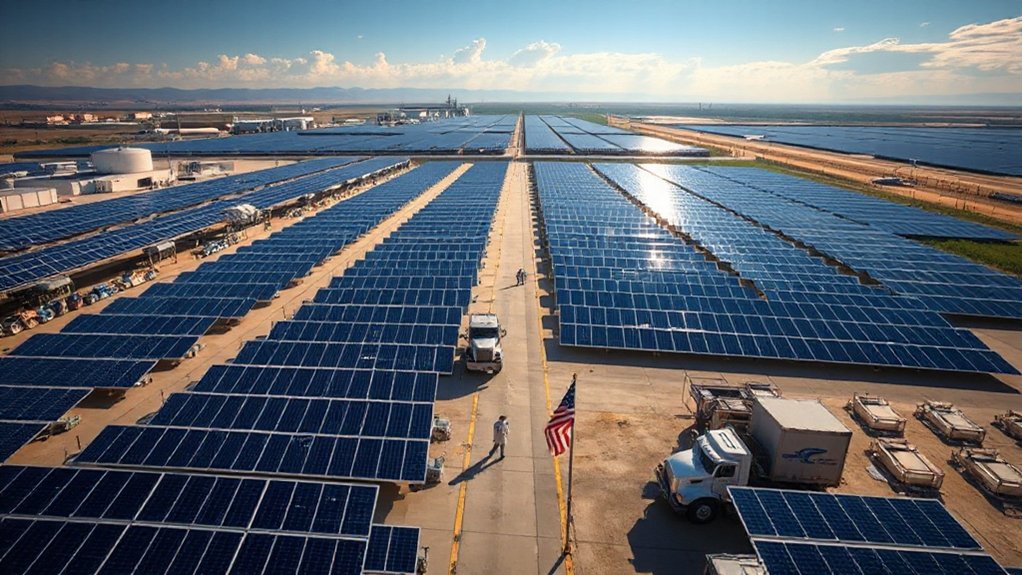Geothermal energy is stuck in a weird time loop. Despite powering homes in Iceland and Italy for over a century, it’s still labeled “emerging technology.” Why? It lacks the sexy appeal of solar panels and wind turbines. Sure, it provides 24/7 power with minimal carbon emissions, but high drilling costs and complex regulations keep it sidelined. Investors hate waiting for returns. Politicians prefer photogenic solutions. The reliable underground powerhouse deserves better treatment.
Why is one of humanity’s oldest renewable energy sources still labeled as “emerging”? Geothermal energy has been powering homes in Iceland and Italy for over a century. Not exactly the new kid on the block. Yet here we are, treating it like some experimental technology while wind turbines and solar panels get all the glory.
Geothermal energy: the centenarian renewable still battling for respect in a world seduced by flashier alternatives.
The tech is solid. Geothermal delivers consistent, dispatchable power 24/7. No sunshine required, no prayers for wind. But good luck finding it on most renewable energy priority lists. The problem? Geography is stubborn. You need heat beneath your feet, and that’s mostly along tectonic boundaries or volcanic regions. Tough luck if you’re in Kansas.
Drilling costs are brutal. Investors look at those upfront millions and run toward cheaper alternatives. Who wants to wait years for returns when you can slap up solar panels in months? The economics just don’t compute for most decision-makers. Wind and solar keep getting cheaper while geothermal seems stuck in financial quicksand.
Then there’s the awkward “clean energy” conversation. Yes, geothermal is low-carbon, but some plants belch out CO₂ and hydrogen sulfide. Not exactly emissions-free. It’s unfortunate since geothermal actually produces 99% less CO2 than fossil fuels for the same energy output. Add concerns about induced earthquakes and resource depletion, and the “green” label gets complicated. Talk about mixed messaging.
Regulatory red tape doesn’t help either. Try getting permits for drilling deep into the earth’s crust. Environmental reviews, land use conflicts, endless paperwork. Solar developers are cutting ribbons while geothermal projects are still filling out forms.
The whole system is rigged against it. Policies favor quick wins and photogenic solutions. Nobody puts geothermal on campaign posters. It’s not sexy. No gleaming panels, no majestic turbines. The high CAPEX for development makes it particularly unattractive to investors seeking reasonable returns on their investments. The sustainability of geothermal energy is also compromised by decreasing steam temperatures as premium sites are exhausted, further limiting its widespread adoption.
References
- https://blog.friendsofscience.org/2023/03/29/the-geothermal-paradox-how-the-earths-second-largest-heat-source-may-be-driving-the-most-recent-warming/
- https://www.frontiersin.org/journals/energy-research/articles/10.3389/fenrg.2021.686140/full
- https://prism.sustainability-directory.com/term/renewable-energy-paradox/
- https://www.theengineer.co.uk/content/opinion/comment-how-to-resolve-the-uk-s-energy-paradox/
- https://en.wikipedia.org/wiki/Gibbs_paradox









